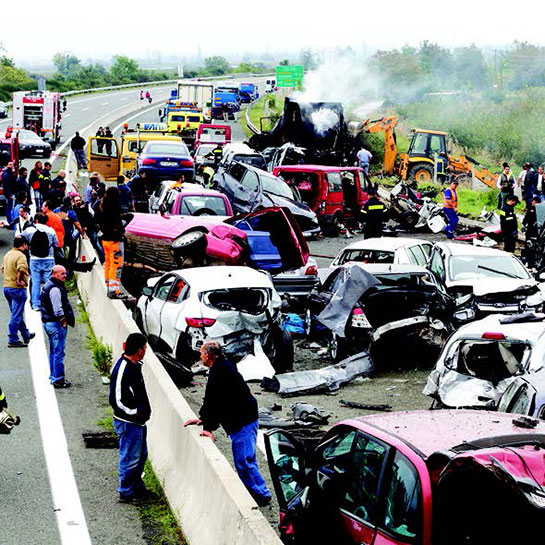The Interoperability Challenge
Interoperability is the ability to share information in real time between multiple and separate entities or agencies. In the emergency services realm, interoperability is critical to initial response and emergency services of all types. While ECCs are generally able to transfer basic voice 9-1-1 calls to neighboring ECCs, they often cannot share other types of communications and data important for emergency response.
One of the most serious problems experienced during major events is poor communications or a complete failure of communications. In some cases, communications systems are incompatible not just within a jurisdiction but within departments or agencies within the same community. Issues related to lack of interoperability in the public safety realm came to the forefront during the 9/11 attacks in the United States and in the aftermath of Hurricane Katrina.
Lack of interoperability can occur due to:
- Use of outdated equipment
- Limited availability of technology
- Isolated or independent planning
- Lack of coordination and cooperation between agencies
- Community priorities competing for resources and funding
- Ownership and control of communications systems.

Interoperability and Public Safety Communications
For an overview of current interoperability issues related to public safety communications, read these blog posts from the APCO Government Relations Office.
Interoperability Initiatives
Many initiatives have been undertaken to improve interoperability in public safety communications. For example. Project 25 (P25) was initiated by public safety agencies and manufacturers to address issues with two-way, land-mobile radio systems. The goal of P25 is to enable public safety responders to communicate with each other using common protocols and systems that are not dependent on proprietary hardware and allow multiple agencies to access each others’ communications networks simultaneously.
Other initiatives and technologies that foster interoperability include Next Generation 9-1-1 and the Nationwide Public Safety Broadband Network operated and managed by FirstNet.
Automated Secure Alarm Protocol (ASAP)
The Automated Secure Alarm Protocol (ASAP) is a national service that is the next generation for the processing of information from alarm monitoring stations needing emergency dispatch.
Project 25
Project 25 (P25) is a longstanding partnership between the public safety communications community, standard development organizations and industry manufacturers to satisfy the communication needs of users for interoperable LMR equipment and systems.
Interoperability Standards
The Multi-Functional Multi-Discipline Computer Aided Dispatch (CAD) Minimum Functional Requirements standard identifies the minimum functional requirements that a CAD system shall include, broken down by public safety discipline. APCO has also developed several Information Exchange Package Documents (IEPDs) that serve as management “frameworks” for XML schemas used by public safety to communicate in a common manner.
Federal and State Interoperability Resources
Includes a collection of federal resources and a list of Statewide Interoperability Executive Committees, or SIECs.
